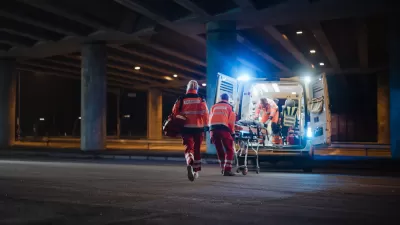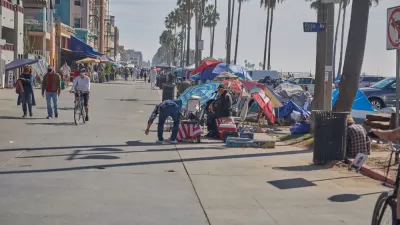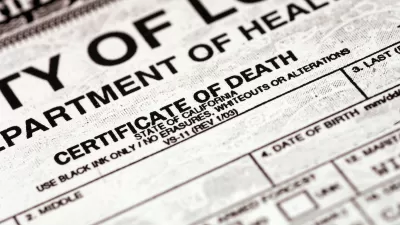The mortality rate among people experiencing homelessness jumped by 203 percent between 2011 and 2020.

A study of mortality rates among unhoused people reveals that the death rate tripled between 2011 and 2020 — even before the pandemic struck. Mariska Kendall explains the study’s results in Governing, writing: “Overdoses played a major role in the deaths studied. But people also are dying at increased rates of things that might be avoided if they had a home or regular access to preventative medical care, such as heat and cold exposure, traffic injuries, cardiovascular disease and diabetes.” Deaths from cardiovascular disease rose by 172 percent.
The researchers attribute the 283 percent increase in part to the opioid crisis, law enforcement crackdowns on encampments that force people to move to more isolated and unsafe locations, and the increase in the average age of unhoused people. “The number of Californians 55 and older who sought homelessness services soared 84 percent between 2017 and 2021, according to the state’s Homeless Data Integration System.”
Margot Kushel, director of the UCSF Benioff Homelessness and Housing Initiative, says becoming homeless is “incredibly bad for your health.” According to Kushel, “There is increasing evidence that you can prevent a lot of these deaths just by getting people housed.”
FULL STORY: It’s Become Significantly More Deadly to Be Homeless

Maui's Vacation Rental Debate Turns Ugly
Verbal attacks, misinformation campaigns and fistfights plague a high-stakes debate to convert thousands of vacation rentals into long-term housing.

Planetizen Federal Action Tracker
A weekly monitor of how Trump’s orders and actions are impacting planners and planning in America.

Chicago’s Ghost Rails
Just beneath the surface of the modern city lie the remnants of its expansive early 20th-century streetcar system.

Bend, Oregon Zoning Reforms Prioritize Small-Scale Housing
The city altered its zoning code to allow multi-family housing and eliminated parking mandates citywide.

Amtrak Cutting Jobs, Funding to High-Speed Rail
The agency plans to cut 10 percent of its workforce and has confirmed it will not fund new high-speed rail projects.

LA Denies Basic Services to Unhoused Residents
The city has repeatedly failed to respond to requests for trash pickup at encampment sites, and eliminated a program that provided mobile showers and toilets.
Urban Design for Planners 1: Software Tools
This six-course series explores essential urban design concepts using open source software and equips planners with the tools they need to participate fully in the urban design process.
Planning for Universal Design
Learn the tools for implementing Universal Design in planning regulations.
planning NEXT
Appalachian Highlands Housing Partners
Mpact (founded as Rail~Volution)
City of Camden Redevelopment Agency
City of Astoria
City of Portland
City of Laramie





























